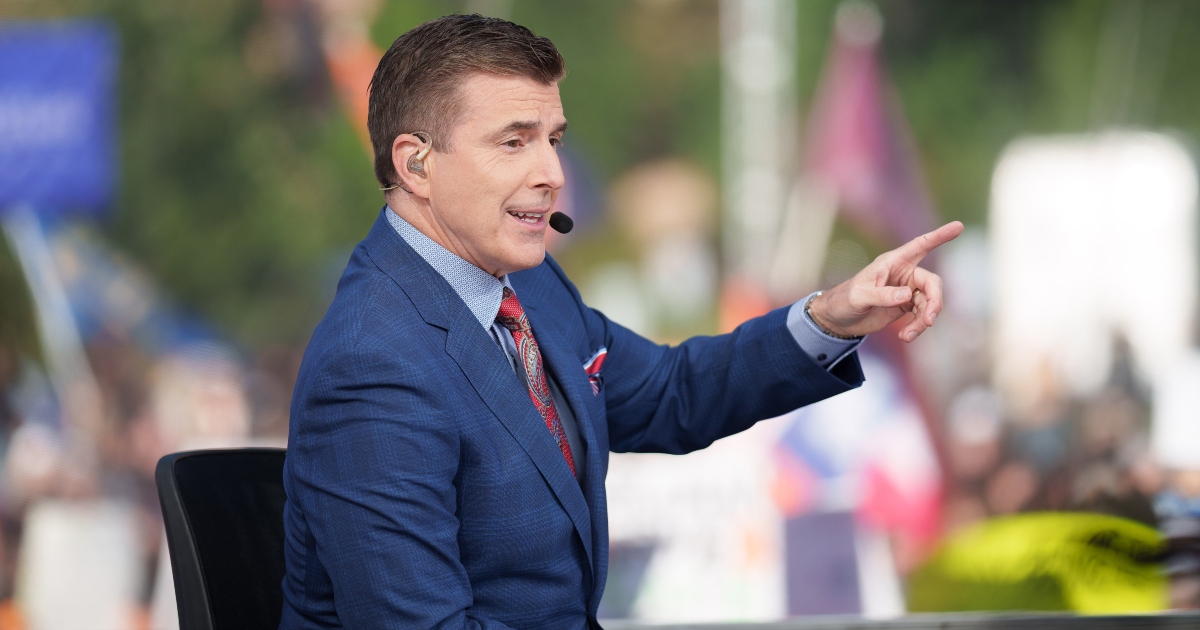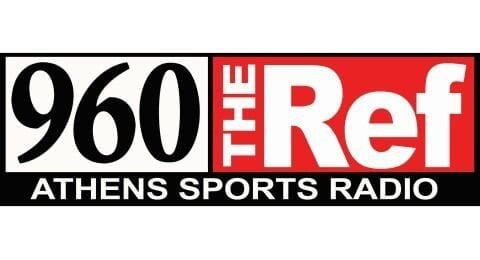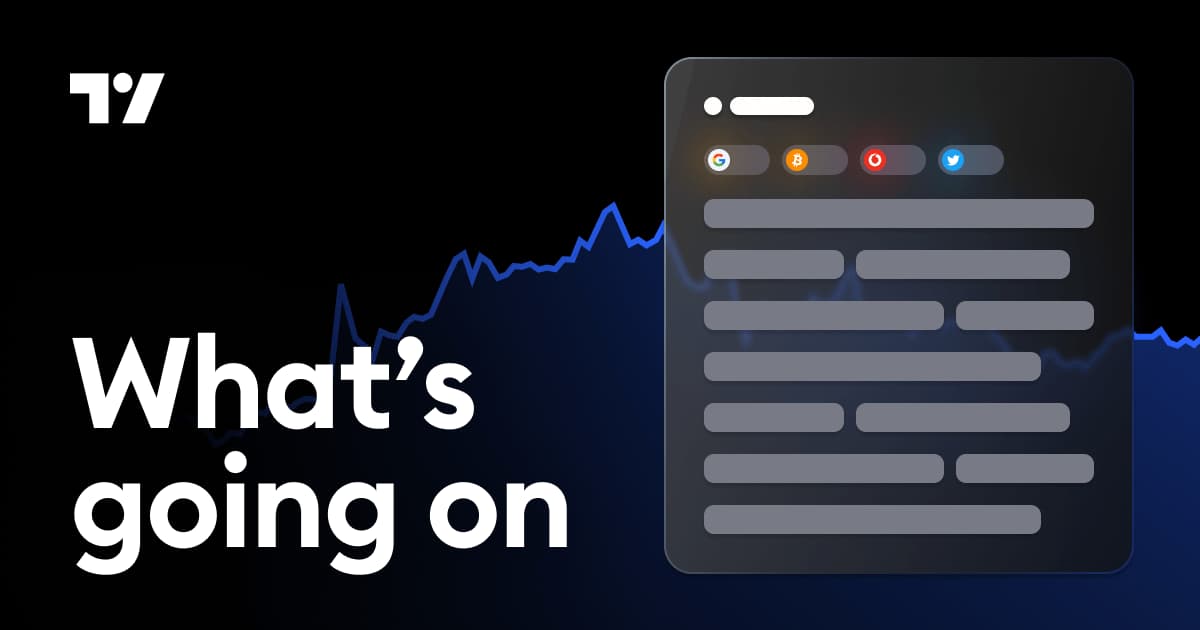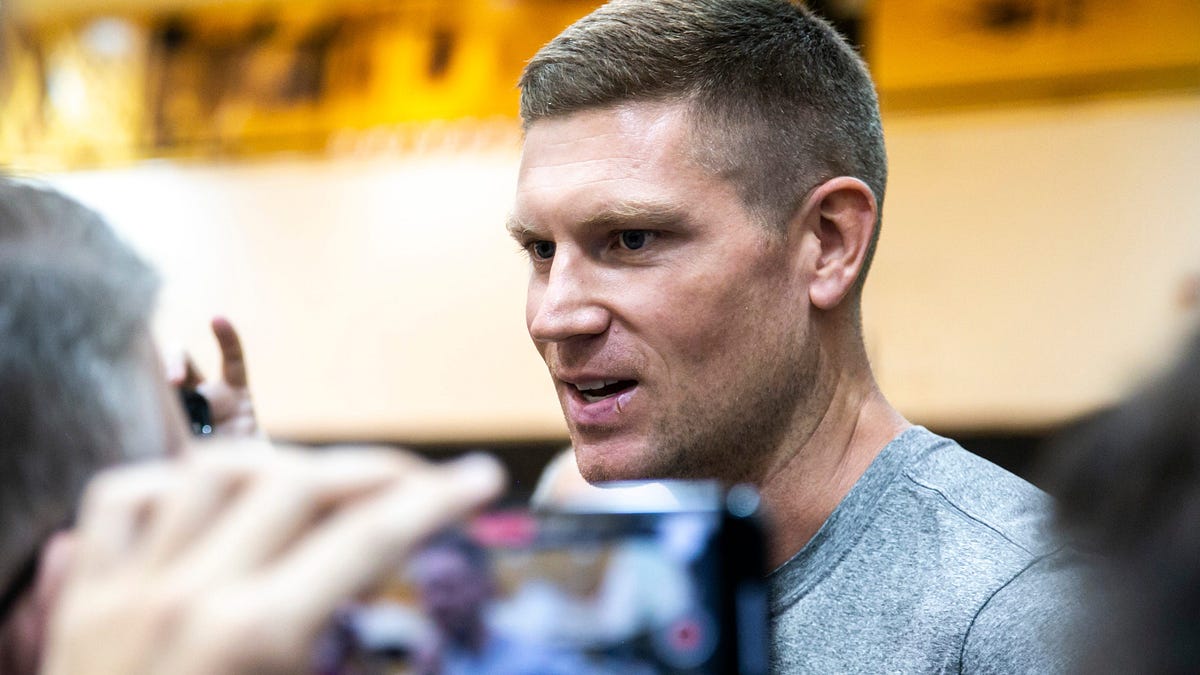NIL
Rece Davis reveals the ‘dumbest thing we do’ with College Football Playoff
The expanded College Football Playoff was a hit in Year 1, but there’s a myriad of changes coming for Year 2 and beyond. ESPN’s Rece Davis has his focus on an area that many people wouldn’t have circled though. The College GameDay host took issue with the way the national title game is categorized. For […]

The expanded College Football Playoff was a hit in Year 1, but there’s a myriad of changes coming for Year 2 and beyond. ESPN’s Rece Davis has his focus on an area that many people wouldn’t have circled though.
The College GameDay host took issue with the way the national title game is categorized. For example, last season’s championship showdown was called the 2025 College Football Playoff National Championship, but it was the finale for the 2024 season. Davis wants to see that rectified in the future.
“The dumbest thing we do with the College Football Playoff is play the 2024 season and then call it the 2025 College Football Playoff [National] Championship. I have to do those wrap-up shows, where we go back through the Playoff and do the intros, they always say it. I refuse to say it that way,” Davis adamantly stated, via the latest episode of the College GameDay Podcast.
“I will say College Football Playoff [National] Championship for the 2024 season, because that’s how you organize it in your mind when you’re thinking about the championships. There’s the answer. I mean, you don’t have to use the Roman numerals if you don’t want to. Use Helvetica font, I don’t care what you do. Just do it something where it’s consistent and everybody understands what year it is, or what season it represents.”
If you couldn’t tell, it’s the football offseason, so there’s going to be some off-the-wall topics that pundits like Davis nitpick. While this doesn’t feel like too big of a deal to some, it’s obviously something that’s weighed heavy on his mind throughout the last couple of months.
As Davis awaits change on that front, the Playoff will look different in 2025 and beyond. After a bit of controversy in Year 1, the system will adopt a straight-seeding model for this coming season.
This comes following criticism of seeding in last year’s CFP. Under the seeding model used last season, the top-four ranked conference champions earned a bye week. The remaining teams were seeded in the order that the selection committee had ranked them. However, that ended up with teams ranked lower by the selection committee getting the bye ahead of teams ranked higher.
Of the four teams that earned the bye last season, none were able to win their first game. That included ninth-ranked Boise State and 12th-ranked Arizona State. It also included the top-two ranked teams in Oregon and Georgia.
As you can tell, the College Football Playoff is ever-changing, so perhaps Rece Davis will get his wish. Last season’s iteration was a resounding success, and we can’t wait to see what’s in-store for an encore.
NIL
3 dead, 81 injured after stand collapses at Algerian soccer match – 960 The Ref
ALGIERS — (AP) — Three people died and 81 were injured following the collapse of a stand after soccer club Mouloudia Club d’Alger won a ninth league title, Algerian authorities said Sunday. An earlier toll was one dead and 50 injured but two fans subsequently died from their injuries following Saturday’s incident at the Stade […]

ALGIERS — (AP) — Three people died and 81 were injured following the collapse of a stand after soccer club Mouloudia Club d’Alger won a ninth league title, Algerian authorities said Sunday.
An earlier toll was one dead and 50 injured but two fans subsequently died from their injuries following Saturday’s incident at the Stade Olympique du 5 Juillet 1962, according to a statement issued by the country’s Ministry of Health.
Algeria president Abdelmadjid Tebboune offered his condolences.
According to the website La Gazette du Fennec, a security barrier broke just as fans were getting ready to celebrate the title following a goalless draw between MC Alger and NC Magra.
___
AP soccer: https://apnews.com/hub/soccer
Copyright 2025 The Associated Press. All rights reserved. This material may not be published, broadcast, rewritten or redistributed without permission.
NIL
Alex Lodise robbed, Baseball adds portal guys, and more
A lot is happening among Florida State Seminole athletics. Here’s a quick synopsis of the latest involving the Noles. The biggest story was FSU shortstop Alex Lodise getting snubbed for the Golden Spikes Award on Saturday night. Lodise had already captured the coveted Dick Howser Trophy (College Baseball Player of the Year). However, the Golden […]

A lot is happening among Florida State Seminole athletics. Here’s a quick synopsis of the latest involving the Noles.
The biggest story was FSU shortstop Alex Lodise getting snubbed for the Golden Spikes Award on Saturday night. Lodise had already captured the coveted Dick Howser Trophy (College Baseball Player of the Year). However, the Golden Spikes Award (Best Amateur Baseball Player in the United States) was awarded to Arkansas’s Wehiwa Kapahulehua Aloy.
Our weekend of celebrating the 2025 #GoldenSpikes finalists has commenced
pic.twitter.com/2mwuommiyX
— Golden Spikes Award (@USAGoldenSpikes) June 21, 2025
Your 2025 Golden Spikes Award Winner
Wehiwa Kapahulehua Aloy pic.twitter.com/dwAX9W3YOg
— Arkansas Baseball (@RazorbackBSB) June 21, 2025
I have a question. If Alex Lodise was already awarded the College Baseball Player of the Year award, how could another college player win the Golden Spikes Award other than Lodise? That’s crazy work, but it’s not surprising when Aloy plays in the SEC.
Lodise had hit for a better average, better slugging percentage, better on-base percentage, and was ACC Defensive Player of the Year.
FSU baseball added another pitcher from the transfer portal on Saturday. Central Arkansas’s Charlie Christensen joins Kevin Mebil, Trey Beard, and Eli Putnam.
FSU newest baseball commit https://t.co/3y6lG2yCS4
— Kelvin Hunt (@khchopchat) June 21, 2025
FSU football has some important visitors taking their official visits to FSU this weekend. Here are the guys you should monitor regarding potential commitments or not.
Here’s a list of players FSU football coaches can’t stop pursuing on the recruiting trail no matter what.
The FSU football social media team has put out some awesome videos and graphics lately. This one seems to show guys stepping up into leadership roles as players were putting in work during the summer.
no shortcuts
#keepCLIMBing pic.twitter.com/QLmPioElOq
— FSU Football (@FSUFootball) June 21, 2025
We also discussed how FSU football recruiting is surging just as it did a year ago this time, but why the coaching staff can’t allow history to repeat itself on the field.
This one game on the 2025 schedule could help FSU land one of the top uncommitted players left in the 2026 recruiting cycle.
FSU expects to land its top priority at quarterback in the 2026 cycle now that he de-committed from Oklahoma.
NIL
NBA Execs Reportedly Feel ‘5, 6 or 7’ Picks Could Be Traded in 1st Round of NBA Draft
Wednesday’s NBA draft could potentially feature a flurry of trades. “Two first-round picks have already been traded, and when you talk to league executives, they think there’s five, six or seven or more in play,” ESPN’s Brian Windhorst said during Saturday’s episode of The Hoop Collective (54:55 mark). “That doesn’t mean they’ll be traded, but […]

Wednesday’s NBA draft could potentially feature a flurry of trades.
“Two first-round picks have already been traded, and when you talk to league executives, they think there’s five, six or seven or more in play,” ESPN’s Brian Windhorst said during Saturday’s episode of The Hoop Collective (54:55 mark). “That doesn’t mean they’ll be traded, but there’s several in play, including one or two [picks] in the top 10, which you don’t often see top-10 picks moved.”
While the first two picks appear set in stone, with Dallas in line to take Duke’s Cooper Flagg and the San Antonio Spurs expected to select Rutgers guard Dylan Harper, the wheeling and dealing could begin as soon as No. 3, when the Philadelphia 76ers are on the clock.
With no real consensus regarding who is the No. 3 prospect on the board—the group of Ace Bailey (who hasn’t worked out with any teams), VJ Edgecombe, Tre Johnson and Kon Knueppel, among others, appear to all be in the running—there could be movement in the top 10 as teams look to move either up or down the board.
There are also expected to be plenty of trades in general this offseason, with most teams lacking cap space, which could impact the draft as well. So it may end up being a fun, frantic event.
NIL
COLUMN
The recent departure of four of Jamaica’s top field athletes to Türkiye has reignited a longstanding and often emotional debate: Should a cash-strapped government prioritize investing in athletes when nurses, teachers, and police officers are still fighting for livable wages? It’s a fair question—but one grounded in a false choice. This issue came to the […]


The recent departure of four of Jamaica’s top field athletes to Türkiye has reignited a longstanding and often emotional debate: Should a cash-strapped government prioritize investing in athletes when nurses, teachers, and police officers are still fighting for livable wages?
It’s a fair question—but one grounded in a false choice.
This issue came to the fore again during my appearance on Lead Story on CVM TV last Friday. The suggestion was made that, in light of wage negotiations across the public sector, the government simply cannot afford to support its elite athletes. This argument, while politically expedient, ignores a key truth: investing in athletes is not a luxury or distraction—it is a strategic investment in national development, social mobility, and future economic growth.
Athletes are not entertainers performing for applause. They are cultural ambassadors, mentors, and living proof that talent, when nurtured, can transcend poverty, violence, and limited opportunity.
A Shelly-Ann Fraser-Pryce, who emerged from the volatile community of Waterhouse to become one of the greatest sprinters of all time, is not merely a track icon—she is a social blueprint. Her story tells thousands of Jamaican children growing up in similarly harsh conditions that greatness is possible. Every time a child ties their shoelaces to train on a patchy field, inspired by someone like her, a new path is being carved away from crime, hopelessness, and underachievement.
And these athletes do more than just inspire from afar. They draw the world to Jamaica. Just recently, Usain Bolt—arguably the most recognizable Jamaican alive—was named the country’s Tourism Ambassador. Why? Because of what he represents globally as the face of Jamaica. Who else could have been appointed to that role and be as effective? This is why a safer, more optimistic Jamaica, shaped in part by sport, becomes a magnet for visitors and foreign investment. An athlete like Roje Stona, had he remained and received the right support, could have also emerged as a powerful ambassador of brand Jamaica. The more we invest in our elite athletes, the more global representatives we cultivate—each one contributing to our tourism product, our national identity, and our economic prospects.

There is also real, data-backed evidence that structured investment in sport delivers tangible social returns. A 2000 study by the Australian Institute of Criminology, titled Sport and Crime: A Report on the Role of Sports in Crime Prevention (source), provides compelling insights.
The report concludes that sports-based programmes can help reduce antisocial behaviour and criminal activity, particularly among youth. It highlights that sport provides a structured outlet for energy, fosters discipline and teamwork, and promotes positive peer associations. These qualities are especially potent in communities plagued by gang violence or low academic achievement—challenges familiar to many parts of Jamaica.
In short: support for sport is support for public safety.
And for those who prefer to speak in dollars and cents, here’s the economic truth: sport pays back—often many times over. Major global events such as the Olympics and World Championships generate billions in tourism, merchandise, broadcast rights, and investment. But even on a smaller scale, successful athletes create economic ripple effects.
From endorsement deals and brand ambassadorships to local club growth and sporting clinics, athletes fuel an entire ecosystem. When they train and win in the national kit, Jamaica benefits—economically, diplomatically, and reputationally.
The Australian study goes further, linking sports investment to increased government revenue. A healthier, more engaged youth population reduces long-term healthcare and policing costs. A booming sports economy creates jobs. The contribution of sport to the national economy also potentially increases government revenue, thereby creating greater fiscal space. With that expanded fiscal room, the government is ultimately in a stronger position to afford more agreeable wages for civil servants—including the very nurses, teachers, and police officers at the centre of the wage debate.
These dynamics, if harnessed strategically, can power a more sustainable and balanced approach to national development.
The idea that we must choose between paying civil servants and supporting athletes is a false binary. In fact, it is poor planning and vision that pits them against each other. Jamaica must build a development model that recognizes how all sectors—education, healthcare, security, and sport—are interconnected. Undervaluing one only weakens the rest.
No one is suggesting that nurses, police officers or teachers be paid less. But just as the country needs skilled professionals to teach, protect, and heal, we also need athletes who can inspire, lead, and elevate Jamaica on the world stage.
The moment we treat our best athletes as expendable, we risk not just losing medals, but losing an entire generation of young people who might have followed their lead.
And if we fail to see the wisdom in keeping our best at home, others—like Türkiye—certainly will.
Leighton Levy is a veteran sports journalist and Content Editor at Sportsmax.TV. He is passionate about Caribbean athlete development and the intersection of sport, culture, and nation-building.
NIL
Nike's Brand is Strong, But Pressures Are Mounting
Introduction Few would dispute that Nike (NYSE:NKE) remains one of the most iconic brands in athletic fashion, with a track record of defining culture, bringing impressive levels of innovation, and delivering at scale globally. However, 2025 is proving to be a challenging year for many of the world’s largest retailers, with mounting pressures from geopolitical […]



Introduction
Few would dispute that Nike (NYSE:NKE) remains one of the most iconic brands in athletic fashion, with a track record of defining culture, bringing impressive levels of innovation, and delivering at scale globally. However, 2025 is proving to be a challenging year for many of the world’s largest retailers, with mounting pressures from geopolitical tensions, rising threats to supply chains, and uncertain trading conditions. I see shares in the company trading close to fair value, so while Nike is likely going nowhere any time soon, the catalysts that have made it investible over the last few decades are not really working for now.
Company Overview
One of the most instantly recognisable brands in the world, Nike has been designing, marketing and selling athletic footwear, clothing, and equipment since 1964. It generally operates across direct to consumer sales channels, delivering just over $50 billion in revenue in FY24. Net margins during this period were a solid 9%, well above the median average of peers at 5%. However, there will be concerns that this growth appears to be faltering, with the share price down over 35% in a year, forward revenues expected to drop by 4%, and EPS sliding 16%. Following the events of the pandemic, a shift towards direct to consumer business was meant to deliver premium margins and a closer relationship with customers. Although there were signs in previous quarters that this was developing, the wider economic landscape globally has taken a significant toll on the balance sheet. Rising costs in logistics, weakening demand, and discounting from competitors have all hit margins more than management would have liked to see.
With so much of the company’s logistics network in China, Vietnam and Indonesia, the recent tariff tensions have put enormous stress on the profitability analysts are expecting over the coming years, with some suggesting that as much as [url=”]95[/url]% of profits could be at risk in the worst case scenario.
Of course, Nike is not the only company dealing with this landscape, but with newer brands amassing loyal followings from social media and more dynamic brand campaigns, firms such as Lululemon are seeing surges in key markets, such as women-led athleisure. Nike is clearly making moves to correct this, with a partnership with [url=”]Skims[/url] likely to roll out in 2026, but it suggests that the firm is perhaps on the backfoot with these emerging trends.
The Bull/Bear Balance
That said, there is enormous strength in the Nike brand, with a track record of cash-generation, innovative campaigns, and huge deals with athletes such as LeBron James and Kylian Mbappe. From an investor perspective, the 2.7% dividend yield adds a decent level of appeal alongside a strong balance sheet, especially in a period of market transition where some of these newcomers appear to be losing share even faster than some of the more established players.
From my perspective, the real weakness comes from relatively weak momentum and a rather expensive valuation. With a forward P/E sitting at about 31x, EV/EBITDA at 16x and P/S at about 2x, the company’s key metrics are at a decent premium despite not necessarily having the growth to justify them. Following the latest Q4 earnings report, which indicated that inventory clearance is underway, many analysts have slashed expectations, with management forecasting revenue decline of between 8-10%.
Digging into the valuation, I’ve developed a discounted cash flow (DCF) model based on the following inputs:
- Terminal growth: 2.5% based on industry,
- WACC: 8% based on industry and peers,
- Revenue CAGR 5Y: 2%,
- EBIT Margin: approx. 11%.
With these assumptions applied, a fair value of shares comes to about $52 per share. This can be closer to $62 in a more optimistic scenario where top line growth exceeds 5%, and with 13-14% margins, but even in this case, I’d not expect to see much more than 10% returns for investors in the near-term.
Looking across the market to peers with slightly more appealing valuations, such as Adidas with P/E of 15x, I feel that it is hard to get excited about this premium as a new investor.
Analyst Perspectives
Of course, there are plenty of reasons to justify both perspectives, and the divided ratings from Wall Street reflect this well. With 63% of analysts now appearing to be behind Buy or Strong Buy ratings, and 35% holding neutral ratings, I appear to be in the relative minority on the bearish side of the spectrum.
Recent upgrades in the Nike coverage from analysts match this, with about 23 upward revisions for EPS guidance, and just 4 downgrades, suggesting that cost control and potential products reflect opportunities looking ahead. That said, top-line expectations for revenue forecasts have been much more negative.
From my perspective, I have my eye on the next earnings report on June 27th. Investors will be keen to understand the latest inventory levels and strategy for approaching markdowns going forward, but mostly will look to the trend in gross margins.
I’d also want to see some more promising performance, particularly in the critical Chinese market, and hear some progress towards new innovations which will keep investors on-side. Investors will likely want to hear exactly where margin targets are landing for management, and the response being taken to fierce competition across multiple sectors.
Closing Thoughts
By no means is the investor thesis for Nike broken, but I fear that it is nowhere near as strong as the valuation may justify. It is still an elite brand across multiple markets, with strong profitability and operational discipline during a volatile period.
However, I feel that it is far from an automatic pick for investors at present, with growth looking uncertain, and a valuation which leaves little room for error. Investors may be rewarded for patience at this stage, especially if innovation and cost control works out in a negative market backdrop, but I suspect there may be safer opportunities elsewhere. Until management are able to present tangible evidence that revenue is accelerating, and that the brand is moving ahead of leaner competitors, I’ll be keeping my distance.
NIL
Auburn basketball adds Matt Gatens as general manager
Auburn brings back a familiar name in Matt Gatens as general manager for basketball On Friday, Auburn announced a new addition to the men’s basketball team with Matt Gatens returning to be the general manager. Gatens is leaving the Iowa Hawkeyes where he was an assistant coach the last three seasons. He was a graduate […]

Auburn brings back a familiar name in Matt Gatens as general manager for basketball
On Friday, Auburn announced a new addition to the men’s basketball team with Matt Gatens returning to be the general manager. Gatens is leaving the Iowa Hawkeyes where he was an assistant coach the last three seasons. He was a graduate assistant for the Tigers from 2016-18 before becoming an assistant coach at Drake from 2019-22. Per the official press release, Gatens will handle roster management and evaluation, agent and donor relations, scouting, recruiting, and game planning.
In the ever-changing landscape of college athletics with NIL teams are adding a general manager to their coaching staffs. Head coach Bruce Pearl knew the importance of having someone in that role. Pearl was quoted in the release saying, “It was important for me to have someone who had strong experience and understanding the challenges of Name, Image and Likeness”. He also added, “I also wanted someone who could help us not only be the best we can be in NIL, but also with managing player and roster development.”
Gatens was part of the Tigers program the year before the 2019 Final Four run. Two key players he coached from that team were Bryce Brown and Jared Harper. He will be a key part of finding more players of that quality for the Tigers.
He played his college career for Iowa from 2019-22 where he was a two-time All-Big Ten player. During his career as the Hawkeyes point guard, Gatens averaged 12.8 points per game and shot 37% from the three-point line. After his college career was over he spent time playing professionally in Europe and the NBA G-League. Gatens will transition to his new role smoothly with his experience coaching for Pearl and the Tigers.
Contact/Follow us @TheAuburnWire on X (Twitter), and like our page on Facebook to follow ongoing coverage of Auburn news, notes, and opinions. You can also follow Phillip on Twitter @PJordanSEC
-

 High School Sports2 weeks ago
High School Sports2 weeks agoParents Speak Out As Trans Pitcher Throws Shutout In MN State Quarterfinals
-

 Professional Sports2 weeks ago
Professional Sports2 weeks ago'I asked Anderson privately'… UFC legend retells secret sparring session between Jon Jones …
-

 Health2 weeks ago
Health2 weeks agoOregon track star wages legal battle against trans athlete policy after medal ceremony protest
-

 Professional Sports2 weeks ago
Professional Sports2 weeks agoUFC 316 star storms out of Media Day when asked about bitter feud with Rampage Jackson
-

 Motorsports1 week ago
Motorsports1 week agoNASCAR Weekend Preview: Autódromo Hermanos Rodríguez
-

 Rec Sports3 weeks ago
Rec Sports3 weeks ago2x NBA All-Star Reacts to Viral LeBron James Statement
-

 College Sports3 weeks ago
College Sports3 weeks agoOKC’s Mark Daigneault knows what it takes to win championships. His wife has won a ton of them
-

 NIL2 weeks ago
NIL2 weeks agoPatrick Mahomes in OKC for WCWS, praises NiJaree Canady and Texas Tech
-

 Motorsports3 weeks ago
Motorsports3 weeks agoCorey LaJoie to make nine NASCAR Truck Series starts with Spire Motorsports
-

 College Sports2 weeks ago
College Sports2 weeks agoFull 2025 Women’s College World Series Finals Schedule






























